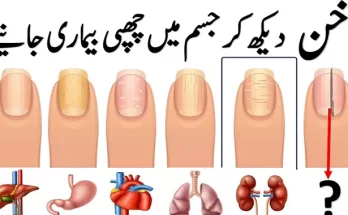
Gum disease, also known as periodontal disease, is a common yet often overlooked dental problem. It can lead to severe oral health issues if not treated promptly.
What Causes Gum Disease?
Gum disease is primarily caused by the build-up of plaque, a sticky film of bacteria that forms on the teeth. When plaque is not removed through regular brushing and flossing, it hardens into tartar, which can only be removed by a dental professional. Here are the main factors contributing to gum disease:
Poor Oral Hygiene: Inadequate brushing and flossing habits allow plaque to accumulate on the teeth and gums.
Smoking and Tobacco Use: Tobacco products significantly increase the risk of gum disease by impairing the immune system and reducing blood flow to the gums.
Genetics: A family history of dental problems can increase the likelihood of developing gum disease.
Hormonal Changes: Hormonal fluctuations during puberty, menstruation, pregnancy, and menopause can make gums more sensitive and prone to infection.
Medications: Certain medications can reduce saliva flow, which helps protect the gums. Antidepressants, antihypertensives, and some heart medications are common culprits.
Illnesses: Diseases like diabetes, cancer, and HIV can affect the gums and overall oral health.
Poor Nutrition: A diet lacking essential nutrients can weaken the immune system and increase susceptibility to infections, including gum disease.
Symptoms of Gum Disease
Recognizing the symptoms of gum disease early can prevent further complications. Common signs include:
- Red, swollen, or tender gums
- Bleeding gums during brushing or flossing
- Persistent bad breath
- Receding gums
- Loose or shifting teeth
- Pus between teeth and gums
Home Remedies for Gum Disease
While professional dental care is crucial, several home remedies can help manage gum disease in its early stages:
1. Good Oral Hygiene
Maintaining excellent oral hygiene is the cornerstone of preventing and managing gum disease. Brush your teeth at least twice a day with fluoride toothpaste and floss daily to remove plaque from between the teeth and under the gumline.
2. Salt Water Rinse
Salt has natural antibacterial properties that can help reduce inflammation and bacteria in the mouth. Mix a teaspoon of salt in a glass of warm water and rinse your mouth for 30 seconds, then spit it out. Repeat this twice daily.
3. Hydrogen Peroxide Rinse
Hydrogen peroxide is an effective antiseptic that can kill bacteria and whiten teeth. Mix equal parts of 3% hydrogen peroxide with water and swish the solution in your mouth for 30 seconds, then rinse thoroughly with water.
4. Oil Pulling
Oil pulling involves swishing a tablespoon of coconut or sesame oil in your mouth for about 15-20 minutes. This traditional remedy is believed to reduce bacteria and improve oral health. After swishing, spit out the oil and rinse your mouth with water.
5. Aloe Vera
Aloe vera has anti-inflammatory and antibacterial properties. Apply pure aloe vera gel directly to the gums, let it sit for a few minutes, and then rinse with water. Repeat this a few times a day.
6. Green Tea
Green tea contains antioxidants that can reduce inflammation and fight bacterial infections. Drinking green tea regularly may help improve gum health. Aim for two to three cups a day.
7. Clove Oil
Clove oil is known for its pain-relieving and antibacterial properties. Dilute a few drops of clove oil with a carrier oil like olive oil and apply it to the gums with a cotton ball. Leave it on for a few minutes before rinsing with water.
Professional Treatments for Gum Disease
If home remedies do not yield significant improvements, it’s crucial to seek professional dental care. Here are some common treatments for gum disease:
1. Professional Cleaning
A dental cleaning, or prophylaxis, involves removing plaque and tartar from the teeth and gumline. This procedure is typically performed during regular dental check-ups and helps prevent gum disease from progressing.
2. Scaling and Root Planing
Scaling and root planing is a deep-cleaning procedure performed under local anesthesia. Scaling removes plaque and tartar from above and below the gum line, while root planing smooths the tooth roots to help gums reattach to the teeth.
3. Antibiotics
In some cases, antibiotics may be prescribed to treat gum infections. These can come in the form of mouth rinses, gels, or oral medications.
4. Surgery
For advanced gum disease, surgical interventions may be necessary. Common procedures include flap surgery, where the gums are lifted to remove tartar, and bone and tissue grafts to regenerate lost bone and gum tissue.
5. Laser Therapy
Laser therapy is a less invasive option that uses a laser to remove infected gum tissue and kill bacteria. This method promotes faster healing and reduces discomfort compared to traditional surgery.
Prevention Tips
Preventing gum disease is easier than treating it. Here are some tips to maintain healthy gums:
- Brush your teeth twice a day with fluoride toothpaste.
- Floss daily to remove plaque between teeth.
- Use an antimicrobial mouthwash to reduce bacteria.
- Eat a balanced diet rich in vitamins and minerals.
- Avoid smoking and using tobacco products.
- Visit your dentist regularly for check-ups and professional cleanings.
Gum disease is a serious condition that can lead to tooth loss and other health complications if left untreated. By understanding its causes and symptoms, adopting effective home remedies, and seeking professional treatments when necessary, you can maintain healthy gums and a bright smile. Regular dental care and good oral hygiene practices are essential in preventing and managing gum disease, ensuring your gums remain in the best possible condition.






